- Learning time
- 10 minutes
- First play time
- 30 minutes
My City
Designed by: Reiner Knizia
My City is a 2-4 player game that comes with a ‘forever’ board (standard game) and, on the flip-side, a board for the legacy game. The legacy game gives players an ongoing experience of episodes, where how each episode plays out affects subsequent games: stickers are added to boards showing trees, rocks, wells and so on. Chapter envelopes contain three episodes, and although the game gets more complex as it goes on, the basic idea is always the same…
Every player has an identical set of tetronimo pieces representing the buildings of their city. Cards are flipped denoting which building will be placed on your board – although the parameters will change in later episodes, at the start the idea is simple: begins next to the river, each building must be adjacent to a previously-placed one, cover rocks and empty spaces (minus points!) try to leave trees exposed (plus points!) and don’t build on the cliffs or forest spaces. You begin with ten points already, and if you can’t (or choose not to) place a building, you deduct a point off yourself. So the challenge, initially at least, is simply to build as effectively as possible. When the game ends (when the cards run out, or when everyone has decided to stop building) points are tallied. The highest-scoring players mark their progress on the board – literally, with a pen! – and everyone moves on to the next episode. But the game also balances things: the winner adds a punitive sticker (rocks, to make their next episode more challenging) whereas the lowest-scoring players get to add more trees, to give them more scoring opportunities. And although the stickers and rules will change (the third episode for instance adds wells, and later games still allow you to build over the initially-outlawed forest spaces)
The game lasts for 24 episodes in its entirety, and although later episodes do get pretty crazy, because the rules change incrementally, it’s a gentle learning curve from the very simple opening. The player who has the most points marked on their board after the final episode is the overall winner of My City!
Joe says
This is, for me, just the latest demonstration of the good doctor's genius. My City is as simple a core concept as you could imagine, making it perfect for family play, even with non-gamers. And yet the legacy aspect, which develops and tweaks the rules on subsequent games, means that those non-gamers will come back and play again and again, excited to find out 'what happens next'! I've been playing this with my three daughters, who at time of writing are aged between 16 and 21, and are, I would say, firmly in the 'reluctant gamer' camp, at least as far as playing my games is concerned. It's made me realise that while I'm drawn to play a new game repeatedly in order to discover the strategies, that doesn't appeal to them in the least. On the other hand, they are entranced (my word) by the notion of 'what comes next', and as a result we've played somewhere in the region of 15 games of My City so far, which is simply unheard of when it comes to repeat plays. Despite the pretty pedestrian presentation, My City isa game I will heartily recommend to anyone. Brilliant.
The guru's verdict

-
Take That!
Take That!
None - but a few of the random aspects of the game (such as the one tile that is the lynchpin of your entire strategy being removed from the round or coming out too late) could cause some major disappointment among sensitive souls.
-
Fidget Factor!
Fidget Factor!
Very little - everyone takes their turns at the same times, so the only fidgeting you might do is when someone else is agonising over placement. Often these moments take place collectively anyway!
-
Brain Burn!
Brain Burn!
Light on rules, but the overlapping criteria of each game ramps up and, more so that the rules, so does the implementation. You begin with a very simple puzzle, but by episode three already have two extra things to factor in: the wells, and the objective of grouping of buildings of the same colour together. After that it gets even more interesting...
-
Again Again!
Again Again!
The legacy campaign offers you 24 episodes, giving you at least 10 or so hours of playtime. After that, you can flip the board over and return to the 'forever' version as many times as you like. Although there isn't the bell-curve and little thrill of discovering what the next episode is about, it's still an intriguing puzzle, with enough going on to keep things engaging.


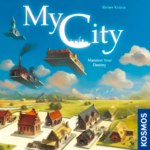
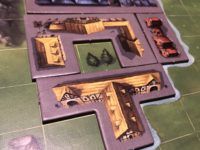
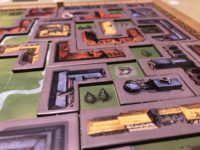
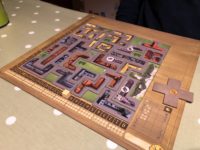
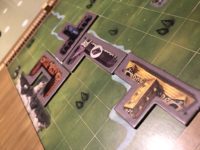



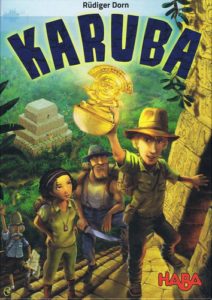
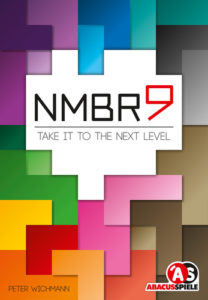
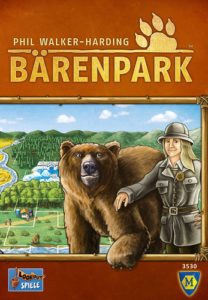
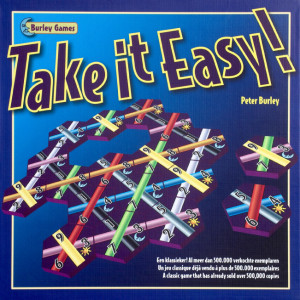
Sam says
One of my favourite simple games is Take it Easy, where everyone is placing identical tiles on their individual boards and trying to complete point-scoring lines. Although it's super-simple to teach and play, it always has a delicious agonising to it, as spaces on your board run out and you plea to the Gods for the right tile to turn up... here, My City takes that conceit and adds a lightly-worn theme (city building) but also the journey of the initial experience slowly and deftly ramping up into something a bit more crazy. As a legacy games go, it's nowhere near the narrative heft of something like Pandemic Legacy, but then it's not trying to be. Designer Reiner Knizia usually aims for accessible rules, but interesting decisions rising out of them, and he really succeeds here.